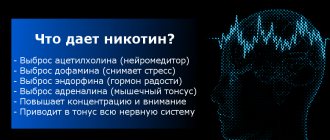Modern man faces stress and nervous tension every day. Moreover, every fifth resident of our country from time to time experiences a feeling of panic attack, suffocation and depression.
Neurasthenia is a mental disorder caused by nervous weakness. This is one of the most common diseases of the nervous system. Representatives of the fairer sex aged 25-50 are more prone to mental disorder.
Ignoring treatment for neurasthenia is fraught with consequences. We invite you to get acquainted with the main symptoms and signs of a mental disorder, as well as consider modern treatment options for nervous weakness.
Causes and risk factors
Asthenic neurosis develops as a result of a disruption in the functioning of the higher regulation of the nervous system. This is caused by excessive psycho-emotional stress in combination with physical factors, for example, insufficient rest for a long time, monotonous exhausting work, unbalanced diet, bad habits, and illnesses.
Depending on the predominant etiological factor, two types of neurasthenia are distinguished:
- reactive – occurs in response to stress, physical or mental trauma, psycho-emotional overload;
- secondary (neurotic syndrome) – caused by another disease.
Risk factors include everything that causes mental, mental and physical exhaustion:
- insufficient night rest;
- lack of a balanced work and rest regime, irregular working hours;
- bad habits;
- poor nutrition (insufficient, unbalanced, irregular);
- social and everyday problems;
- financial distress;
- physical inactivity or, on the contrary, excessive physical activity;
- infections and other diseases (infectious diseases, metabolic disorders, hypertension, oncological pathology, injuries and their consequences, etc.);
- insufficient exposure to fresh air;
- no change of environment for a long time.
People with increased responsibility, prone to perfectionism, those who bear the burden of responsibility in relation to other people who depend on them, who feel the need to adhere to a certain social status at all costs, as well as those whose activities are related to making important decisions in life, are predisposed to neurasthenia. conditions of limited time.
The most vulnerable to neurasthenia are teenagers, students, young mothers, middle-aged people in certain professions, and the elderly.
Recommendations and preventive measures
No one is immune from the development of neurosis. Moral and physical exhaustion, stress and upheaval are far from uncommon in the modern world, and it is almost impossible to protect yourself from this. How to deal with the likelihood of developing neurasthenia?
You can reduce the risk of falling into a risk group by:
- By radically reviewing and adjusting your lifestyle;
- By controlling your physical activity, avoiding overwork and alternating it with rest;
- By reviewing your menu to ensure that the right foods predominate;
- Not forgetting about sports and street walks;
- Focusing on rest and relaxation activities;
- Abstracting as much as possible from provoking factors, trying to avoid situations that the psyche cannot cope with;
- Be sure to alternate mental work with physical work, evenly distributing stress and relaxation;
- Doing immune-strengthening procedures.
Alternating mental work with physical
Planning your daily routine and distributing tasks requires increased attention. When scheduling things, it is important to leave a certain amount of time “in reserve” in case of unforeseen situations, in order to avoid stress. For example, if something doesn’t work out, there should always be a certain amount of time to eliminate the error, so that such little things do not cause damage to the nervous system.
Also, do not forget that the body can work productively only after sufficient sleep. Don't limit yourself to rest.
Experts recommend that everyone individually select a set of suitable techniques to relax the nervous system after shocks, stress or physical strain. Swimming, relaxation and massages, breathing exercises, yoga, relaxing baths with aromatic oils will help cope with such conditions perfectly.
Never use alcohol or drugs to relax.
When preventing neuroses, it is important to take into account a simple fact: when changing activities, disconnect from work and completely devote yourself to another activity.
Forms of the disease
There are two forms of neurasthenic disorder - hypersthenic and hyposthenic, sometimes they are considered as successive stages of the disease.
Hypersthenic neurasthenia
The development is based on the mechanism of strengthening the processes of excitation of the brain with a weakening of the processes of inhibition. This is the initial stage of pathology, which is manifested by excessive excitability and increased irritability, which constantly accompany a person and manifest themselves in all areas of his activity.
Signs:
- increased excitability: irritability, tension, short temper;
- emotional instability;
- anxiety;
- difficulty concentrating;
- memory impairment;
- problems falling asleep, restless intermittent sleep, waking up early, feeling groggy after sleep;
- decreased ability to work, difficulty making mental or physical effort;
- vegetative and somatic manifestations (tachycardia, increased heart rate, increased sweating, attacks of dizziness, headache).
Hyposthenic neurasthenia
Characterized by a predominance of inhibition processes over excitation.
Signs:
- weakness, lethargy;
- apathy:
- depressed mood, tearfulness;
- emotional lability;
- increased drowsiness, daytime sleepiness, problems falling asleep, poor sleep quality;
- fixation on ailments, hypochondiac state.
"Neurasthenic's Helmet"
This symptom is a key sign of asthenic neurosis. It gives the feeling of the constant presence of a strong helmet on the head, squeezing the skull and interfering with normal life activities. The syndrome is a headache of a compressive nature, which is accompanied by the following manifestations:
- Tingling;
- Feeling of a hoop tightly fastened to the head;
- Feeling of muscle contraction.
Neurasthenic casque syndrome
Asthenic nervous disorder is characterized by muscle tension, which increases the susceptibility of nerve endings. This syndrome is associated with these processes.
The sensations of the “neurasthenic helmet” seem so realistic that a person sometimes involuntarily tries to remove the invisible headdress or adjust it on his head.
Stages of the disease
There are three stages in the course of neurasthenia:
- Increased irritability. Quite ordinary things cause strong irritation: conversation, minor noise, awkwardness, minor failures. For trivial reasons, the patient loses self-control and becomes enraged. Has difficulty falling asleep, sleeps poorly, wakes up sleep-deprived, and feels tired throughout the day.
- Increasing symptoms. Even rest does not help the symptoms disappear or at least reduce them. The patient is constantly tired, any work involves significant effort. Attacks of impotence and tearfulness appear.
- A stage of severe nervous disorder characterized by complete disability. The patient is apathetic, lethargic, drowsy, depressed, and shows no interest in what previously occupied him.
What diseases can it be associated with?
Neurasthenia is a type of neurosis in which the patient, due to being in chronic stress, experiences a lot of very unpleasant sensations. The danger of neurasthenia lies in the fact that against the background of constant tension in the nervous system, psychological discomfort and stress, the patient develops psychosomatic diseases or symptoms of physiological abnormalities.
Objectively finds a place:
- asthenia,
- hyperesthesia,
- chronic fatigue,
- irritability,
- sleep disorders and insomnia,
- headache and dizziness.
Subjectively, the patient experiences a lot of varied, individually manifested symptoms. These are called hypochondriacs - the symptoms of physical illness they experience are not confirmed and are not explained by a psychotic disorder.
On the part of the cardiovascular system, neurasthenics complain of rapid heartbeat, a feeling of squeezing or tingling in the heart area, increased heart rate, and hypertension.
From the digestive system, there are complaints of poor appetite, pressure in the epigastric region, heartburn, belching, bloating, constipation, diarrhea, and other dyspeptic symptoms.
From the genitourinary system, attacks of pollakiuria in a state of excitement (frequent urge to urinate), decreased sexual desire, premature ejaculation with a subsequent feeling of weakness and dissatisfaction may be observed.
Symptoms of neurasthenia
Early signs of neurasthenia are similar to symptoms of overwork: constant fatigue, difficulty performing mental or physical work, inability to concentrate on performing necessary tasks, absent-mindedness, stress intolerance. What distinguishes neurasthenia from physiological fatigue is that the symptoms gradually progress (sometimes for more than one year), intensify over time and do not go away even after long sleep. However, achieving long-term sleep is not so easy, since insomnia (insomnia) is one of the characteristic signs of a neurasthenic state. Despite fatigue, a person experiences difficulty falling asleep (the period of falling asleep can last several hours), his sleep is superficial, his dreams are disturbing, and he often wakes up too early. After sleep, there is no vigor and a surge of strength, fatigue persists. Sometimes patients, on the contrary, experience constant drowsiness, but even in this case, sleep does not bring relief.
With neurasthenia, the emotional state of patients suffers
The emotional state is disturbed, patients are irritable, and any trifle can serve as a reason for a strong emotional outburst. Following the release of emotions, exhaustion quickly sets in. Neurasthenia differs from ordinary emotional incontinence in that a bad mood has practically no bright intervals, there are no periods of emotional uplift, and a person loses the ability to enjoy life. Other patients have a tendency to tearfulness; they often cry for the most insignificant reasons, and sometimes without them.
This condition worries people; they realize that it is atypical for them and abnormal, and this concern, developing into constant anxiety, further intensifies the symptoms.
Mental and physical exhaustion is accompanied by physical symptoms:
- persistent compressive headache of a girdling nature, so characteristic of this condition that it is called the “neurasthenic’s helmet”;
- dizziness;
- tachycardia;
- hyperhidrosis (excessive sweating);
- changes in blood pressure;
- decreased appetite or, conversely, compulsive overeating;
- decreased libido, decreased potency in men;
- freezing.
If we are talking about a neurotic syndrome accompanying a somatic illness, signs of physical exhaustion come to the fore, and if we are talking about neurasthenia as a mental disorder, psycho-emotional disorders become the main manifestations. However, in both cases there are manifestations, both mental and physical.
Manifestations and symptoms
Neurasthenia has symptoms expressed under the guise of disorders of the autonomic nervous system. Treatment methods for adults and children directly depend on the correct diagnosis. A characteristic sign of this type of neurosis is the “neurasthenic helmet,” but we will return to this manifestation a little later.
Key manifestations of neurasthenia observed in all categories of patients:
- Systematic dizziness;
- Sleep disturbance;
- Increased fatigue;
- Deterioration in performance;
- Memory impairment;
- Loss of self-esteem;
- Systematic feeling of anxiety;
- An unreasonable feeling of fear.
Over time, mental disorders and neuroses provoke disruption of the cardiovascular system. In such a situation, you may experience:
- Feeling your own heart beat;
- Attacks of tachycardia;
- Change in skin color;
- Chest pain;
- Fluctuations in blood pressure.
The above manifestations occur unexpectedly, due to stress, anxiety or nervous strain.
In addition, neurasthenics do not have the ability for long expectations and self-control.
Features of the course of neurasthenia in women
There is a widespread belief in society that neurasthenia occurs much more often in women than in men. These data are not confirmed either statistically or clinically. Both sexes suffer equally from asthenic neurosis, however, due to cultural characteristics, women are more inclined to demonstrate symptoms, while men are instructed to be restrained in their expressions of emotions. A peculiarity of the course of neurasthenia in women is its more obvious nature, which helps in the timely detection and treatment of the disease. In men, neurasthenia is more often diagnosed at later stages, which is accordingly more severe, this is due to the fact that men tend to neglect this condition and seek medical help late.
Neurasthenia in women is more pronounced and mild, in men it is hidden and severe, but this is not explained by physiological reasons, but by the difference in socially acceptable behavior of men and women.
Forecast
In general, the prognosis regarding neurasthenia is satisfactory, since this pathology is the mildest form of neurosis. A neurologist with a psychologist and an endocrinologist are quite capable of coping with the nervous system affected by the disease. Disability is assigned to patients in extremely rare cases; no deaths from neurasthenia have been recorded.
You can completely get rid of the symptoms and manifestations of asthenic neurosis by eliminating the factor that provokes this condition and traumatizes the psyche. The earlier therapy is started, the greater the likelihood of quickly returning to the usual rhythm of life.
For your information. Proper rest after completing a course of therapy will help you restore your health faster.
Ignoring the doctor’s instructions will lead to the chronic stage of neurasthenia, which already has other manifestations. This does not pose a threat to life, however, frequent deep depression of a protracted nature cannot but leave a negative imprint on a person’s psychological state.
Diagnostics
Diagnosing neurasthenia is a difficult task, especially in the early stages, since this condition is similar to both ordinary fatigue and psychogenic reactions, and the initial symptoms of most mental illnesses. Therefore, a neurologist conducts a thorough and detailed survey of the patient, studying his medical history, emotional state, reaction to external signals, and mnestic abilities.
If you suspect neurasthenia, you must undergo a neurological examination
In case of neurasthenic syndrome, an examination is necessary to identify the underlying disease. The examination includes the diagnosis of infectious diseases (bacteriological analysis, PCR), blood and urine testing; instrumental studies and consultations with specialists may be required.
Asthenia is assessed using the AS - Asthenic State Scale, which is based on the MMPI questionnaire (Minnesota Multiphasic Personality Inventory, Minnesota Multidimensional Personality Inventory). The patient is asked to fill out a 30-item questionnaire (certain statements must be confirmed or denied). The room where the test is carried out has special requirements: it should not be noisy, should be well lit and comfortable. The presence of asthenia is assessed by the points scored:
| Number of points | Presence of asthenia |
| 30–50 | Absent |
| 51–71 | Weak |
| 76–100 | Moderate |
| 101–120 | Expressed |
Differential diagnosis is carried out, first of all, with depression (depression is characterized by melancholy, pessimism, low self-esteem, intensification of the condition in the morning; with neurasthenia, self-esteem usually does not suffer, anxiety, irritability or apathy is characteristic, the condition intensifies in the evening). Differentiation with hypersomnia (with increased sleepiness), hypochondriacal neurosis, reactive neurosis/psychosis is also necessary.
What drugs are used to treat neurasthenia?
Medicines for the treatment of neurasthenia are used exclusively as prescribed by a doctor. Priority is given to psychotherapeutic rather than medicinal effects. Drugs prescribed for neurasthenia can be divided into several categories:
with hypersthenic form
- chlozepid (Elenium),
- oxazepam,
with hyposthenic form
- trioxazine,
- thioridazine (sonapax, melleril),
- medazepam,
- diazepam,
- Eleutherococcus extract.
tonics
- Chinese lemongrass fruits,
- ginseng root,
- pantocrine,
- saparal,
- calcium gluconate.
normalizing the function of the cardiovascular system
- motherwort tincture,
- bromine preparations,
- Valerian tincture,
- hawthorn tincture.
Treatment of neurasthenia
Treatment for neurasthenia consists of lifestyle modifications, medications and psychotherapy, all three of which are equally important.
Lifestyle modification
- Compliance with the work and rest regime.
- Adequate sleep (it is necessary to go to bed and wake up at the same time; in case of severe sleep disturbances, they resort to medication to help improve it).
- Adequate nutrition – balanced, enriched with vitamins and minerals, regular, taking into account the possible underlying disease.
- A calm environment at work and at home. If your job involves regular, heavy emotional or physical stress, you may need to change your job.
- Regular but moderate health-improving physical activity in the form of physical therapy exercises, swimming, dancing, long walks, morning jogging - the type of exercise is chosen by the patient in accordance with his preferences.
- Avoiding alcohol abuse and, if possible, smoking.
Changing the usual environment, for example, traveling, can be effective, but without other measures the positive effect will be temporary, and after life returns to normal, the symptoms of the disorder will return.
Drug therapy
Drug therapy for neurasthenia is symptomatic. In case of increased irritability, sedatives and drugs are prescribed to help establish normal sleep. If necessary, antidepressants and antipsychotics are used. If asthenia is secondary, treatment of the underlying disease comes to the fore, which helps to cope with the manifestations of neurasthenic syndrome. Vitamin therapy is indicated.
For increased irritability, sedative medications are used
Self-medication is highly undesirable, as it is highly likely to have significant side effects and can lead to the opposite effect, i.e., increased symptoms.
Psychotherapy
The main goal of psychotherapy in this case is to increase stress resistance. The patient is trained in relaxation techniques, proper time management, and methods for increasing personal effectiveness.
Consequences and complications
If neurasthenia is not treated promptly, the disease can develop into a more serious pathology of a chronic nature, such as prolonged depressive psychosis. In addition, surges in adrenaline in the blood have a detrimental effect on the functioning of organs and systems.
Complications can arise due to incorrectly selected therapy or its complete absence (provided that the provoking factor has not gone away):
- Loss of opportunity for social adaptation. Due to the disorder, the person’s skill in establishing interpersonal connections is blocked, and the need to communicate with people disappears.
- Noticeable decrease in working capacity. Loss of concentration, sleep disturbances, deterioration of brain activity and memory prevent a person from performing usual activities at home or at work and leads to rapid fatigue.
- Constantly pursuing obsessive states in the form of some phobias, thoughts and unpleasant memories interfere with the normal life of the patient. In order to avoid psycho-traumatic factors, neurasthenics are forced to perform the same actions several times in a row to make sure that what they did is perfect.
- The occurrence of pathologies of internal organs due to disruption of their normal functioning and adaptive dysfunction of the body. Under these circumstances, the risk of developing infectious and colds increases.
Colds
A constant feeling of anxiety, emotional instability, resentment and other similar factors often provoke problems in the family in the form of various conflicts, scandals and moments of misunderstanding.
What is the manifestation of the irritable form of neurasthenia?
The irritable form of neurasthenia belongs to the second stage of the disease. It appears immediately after the hypersthenic reaction. It occurs in people with choleric temperament. Such patients do not appear calm even in normal conditions. When they have neurasthenia, one can only imagine how much their symptoms of asthenic neurosis intensify.
The main symptom of this form is severe irritability. Its manifestations quickly disappear and are replaced by resentment. The main thing is to have someone nearby to whom you can pour out your emotions.
When trying to do any work, a neurasthenic person in the stage of irritability intensifies the “helmet”. He cannot bring the work to the final stage, but starts several things at the same time.
Increasing pain, dizziness and nervous exhaustion are the main symptoms of this stage of the disease. Neurasthenia in this phase is characterized by a state of complete exhaustion, so a person cannot perform any type of activity, both physical and mental.
Homeopathy and folk remedies
Recovery can be achieved with the help of homeopathic and folk remedies. They should be used after consultation with a doctor, because... some of them may have contraindications. If you choose the means yourself, you should give preference to the most harmless ones and stick to the minimum dosage.
Homeopathy
Homeopathy shows high effectiveness. However, it is best to choose medications with a doctor, because only the correct individual selection will allow for effective treatment. Any homeopathic tablets should be taken with caution. If you feel a deterioration in your health, you should immediately stop taking it and visit a doctor.
The most popular means:
- “Nux Vomica” – normalizes sleep, improves brain activity;
- “Ignation” – helps remove hysteria, reduces hypersensitivity, stabilizes mood;
- “Anacardium Orientale” – increases attention, relieves pain;
- "Gelsemium" - reduces the impact of stress, relieves limb tremors, irritability and anxiety;
- "Argentum Nitricum" - allows you to get rid of phobias, anxiety or bad mood;
- “Thuja” – relieves anxiety, suspiciousness and phobias;
- "Hamomilla" - helps reduce pain and irritability in women;
- “Lachesis” – relieves symptoms caused by menopausal neurosis, stabilizes a woman’s mood;
- "Pulsatilla" - eliminates mental symptoms that appear with neurasthenia.
Some drugs cannot be taken at the same time, which is due to the incompatibility of the herbal components included in their composition.
Folk remedies
A good cure for neurosis and anxiety can be prepared independently at home. To do this, you will need to select a suitable recipe from folk methods, prepare the appropriate remedy and use it.
The most effective options are:
- Angelica root bath. You will need to prepare a glass of chopped plant roots, add water (3 liters), and boil over low heat for about 15 minutes. Additionally, it is recommended to add oregano and mint (1 tablespoon each), leave the broth to boil for another 10 minutes, and then let it brew for one hour. The mixture is poured into a bathtub filled with water and placed there for 15-20 minutes.
- Beetroot with honey. The product is prepared by mixing beet juice with honey in equal volume; it will need to be infused for about three hours. Take 2 tablespoons of the mixture half an hour before meals.
- Melissa tincture. You should pour lemon balm leaves with alcohol (1 to 3), let the mixture brew for 10 days. You need to drink one spoon in the morning and evening on an empty stomach.
- Hop cones. You need to grind several hop cones to a powder state. They should be taken in ½ tsp. three times a day before meals.
- Valerian. You will need several roots of the plant, which should be crushed, and from their pieces (4 tsp) make a tincture. To do this, pour boiling water (50 ml) over the roots and leave them until the morning. Take one spoon 4 times a day.
Folk remedies perfectly complement the main treatment, accelerating the patient’s recovery. But, as in the case of homeopathy, such medicines should be used with caution to avoid unpleasant consequences.
Complementary therapy
Additional therapeutic methods must be used together with medications. This is especially important in case of severe neurasthenia and the development of the disease in a young child. The choice of method depends on the individual characteristics of the patient and the stage of neurosis. Therefore, the doctor can limit the range of possible methods.
Most often used:
- Acupuncture - helps restore the movement of energy throughout the body, normalizes organ function, calms or tones the nervous system, and also helps relieve all symptoms of neurasthenia.
- Acupressure - relieves fatigue, helps to relax by relieving mental stress, reduces the effects of stress, soothes muscles, normalizes blood circulation and increases the overall tone of the body.
- Pneumatic rhythmic massage - dilates blood vessels, increases immunity, improves nutritional processes, reduces symptoms, helps relieve pain.
- Moxotherapy – accelerates metabolic processes, normalizes the functioning of the lungs and stomach, increases the body’s energy retention and immunity, and also eliminates the residual effects of neurasthenia.
- Herbal medicine improves mood, normalizes the mental state, restores emotionality, protects against stress and anxiety, and also stimulates mental activity and strengthens attentiveness.
- Stone therapy - has a relaxing effect on a person’s muscles and mental health, increases the amount of energy, restores strength after a hard day, and allows you to get rid of the effects of stress.
- Psychotherapy - restores the patient’s psyche, normalizes his mood, returns correct views and interest in life, helps get rid of irritability, aggression and depression.
The last method is considered the most effective. Psychotherapy is the most important element in the treatment of neurasthenia. Therefore, it is used almost always. Moreover, it includes many different techniques that have different effects. Their correct combination allows you to achieve good results in a short time.
Treatment of other diseases starting with the letter - n
| Drug addiction treatment |
| Treatment of obsessive-compulsive neuroses |
| Treatment of neurogenic bladder |
| Treatment of neurocirculatory dystonia |
| Treatment of Anorexia Nervosa |
| Treatment of diabetes insipidus |
| Treatment of ulcerative colitis |
| Treatment of unstable angina |
| Treatment of nephrogenic hypertension |
| Treatment of nephropathy |
| Treatment of nephroptosis |
| Treatment of nephrotic syndrome |
| Treatment of non-Hodgkin's lymphoma |
The information is for educational purposes only. Do not self-medicate; For all questions regarding the definition of the disease and methods of its treatment, consult your doctor. EUROLAB is not responsible for the consequences caused by the use of information posted on the portal.










